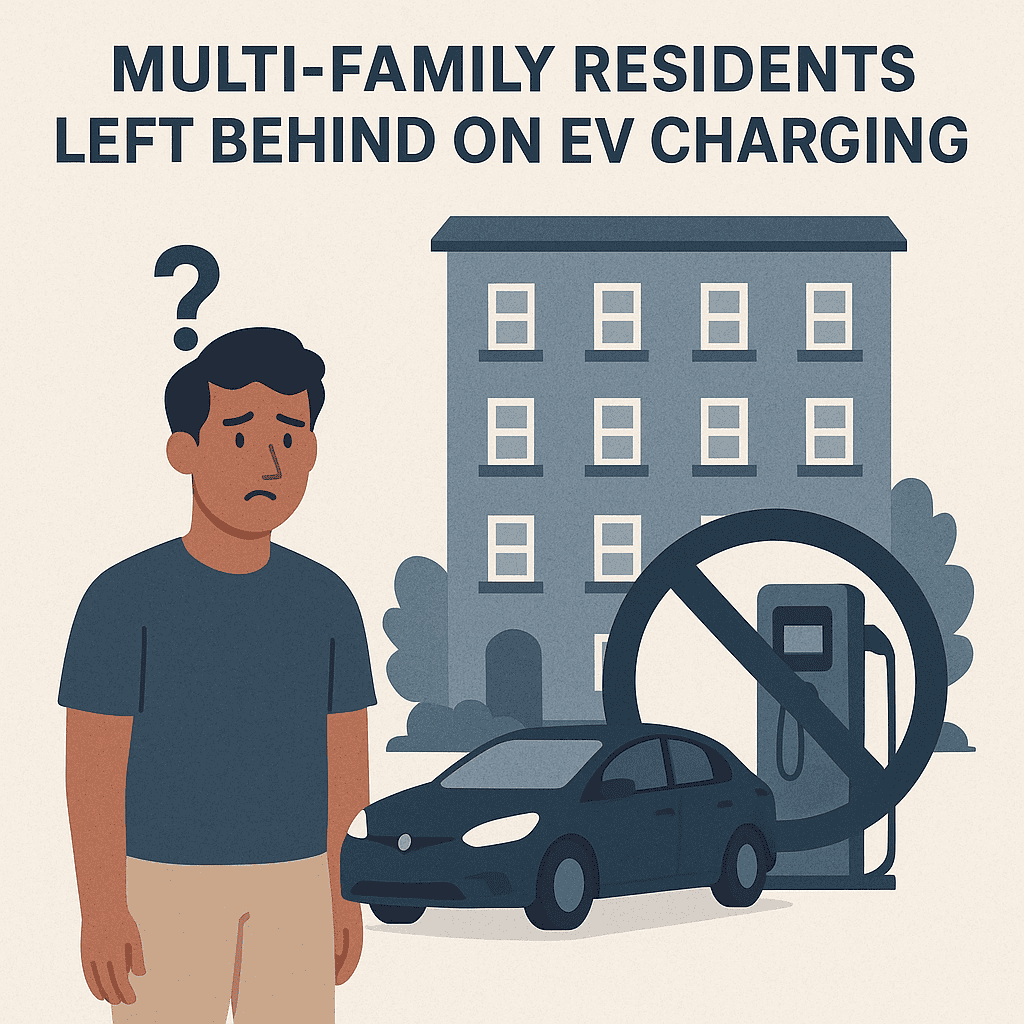Why U.S. Multi-Family EV Drivers Are Falling Behind — and What’s Actually Working
EV charging has advanced greatly nationally. But apartment and condo residents remain under-served. While homeowners are roughly three times more likely to own an EV, many renters live without reliable charging access.
Core Issue
Charging policy and infrastructure were built around single-family homes. About 84-94% of EV drivers in detached homes have home charging. In contrast just 18-48% of apartment dwellers do. Without overnight access, EV ownership is much less practical in MFH settings.
Key Barriers
- High upfront cost. The cost of installing a charging port in an existing MFH often runs $3,000-$6,000 per port, excluding permitting and utility upgrades.
- Incremental installs cost more. Doing one or two chargers at a time can trigger disproportionately large utility upgrade costs.
- Lack of assigned parking limits practical deployment. Many renters have unassigned or shared parking.
- No legal protections in many places. Renters or condo owners often lack ability to force or even negotiate installation of chargers.
Success Stories & Models
- The Electric Vehicle Charger Rebate program for business customers: up to 50% of total project cost in some cases—and substantial rebates per kW for Level 2 and DCFC chargers.
- Many multi-family housing properties are leveraging federal and state tax credits, along with utility incentives, to cut initial installation costs. In many cases, these programs reduce the upfront investment to a negligible level compared to the long-term revenue potential from EV charging.
What Must Change
- Enact right-to-charge laws universally.
- Update building codes: require new MFH to include EV-ready wiring / parking. If new units have 1 EV-ready spot per unit, long-term costs reduce drastically.
- Offer retrofit grants/incentives that cover major cost categories (permitting, electrical upgrades, equipment). Aim to cover 50-75% of costs.
- Plan deployments in clusters, not one-off chargers. Use shared infrastructure and load management to spread fixed costs and delay or avoid major grid upgrades.
- Speed up and simplify permitting and utility interconnection.
Bottom Line
Without these changes, the homeowner-renter EV ownership gap will persist. Data shows lack of access to home charging is a barrier almost as large as cost of EVs themselves. Fixing multi-family charging is essential to equitable EV adoption.

